Occupational Safety Training for Mattress Edge Sewing Machine Operation
99,000 ₫
Note: The above price is calculated per person and may fluctuate depending on the number of trainees participating in the course and market movements. For more accurate pricing support, please refer to the price list or contact our consultants directly.
Occupational safety is an important issue when operating mattress edge sewing machines and must be addressed promptly to ensure the health and safety of workers and to enhance the reputation of businesses here. The Occupational Safety Training course is one of the effective solutions to raise awareness about preventing workplace accidents for workers operating mattress edge sewing machines.
Table of Contents
Toggle1. Overview of Mattress Edge Sewing Machines
a. What is a mattress edge sewing machine?
A mattress edge sewing machine is a specialized device in the mattress manufacturing and processing industry. This machine is designed to perform tasks such as sewing the edges around mattresses, creating strong and even stitches that help the mattress have a finished and durable appearance.
Key features of a mattress edge sewing machine:
- Main function: The machine sews edges or seams around the mattress. This not only enhances the mattress’s aesthetics but also protects the mattress edges from damage or tearing.
- Design: The machine typically has a robust structure with specialized parts to handle thick fabrics and materials. Some machines are equipped with automatic mechanisms to adjust stitch length and depth to suit mattress size and thickness.
- Applications: Besides sewing mattress edges, the machine can also be used to sew other large and thick products like chair cushions, sleeping bags, and other textile products.
- Technical specifications: Mattress edge sewing machines often feature high sewing speeds, continuous operation capability, and powerful transmission parts to handle tough and thick materials.
- Technology: Some modern mattress edge sewing machines come with automatic features such as speed adjustment, thread type switching, and even thread tension control to ensure sewing quality.

b. Operating principle of mattress edge sewing machines
Material preparation and machine setup
- Prepare the mattress: First, the mattress needs to be aligned so that the edges or fabric layers are ready for sewing. The mattress is usually placed on the machine’s working table.
- Set up the machine: Adjust machine settings including thread type, sewing speed, and seam size. Some machines feature automatic adjustment functions for these parameters.
Drive mechanism
- Drive components: The machine uses a drive mechanism to feed the thread and fabric through sewing parts. The drive includes motors and wheels that pull the fabric under the needle.
- Motor: The motor powers the needle and other machine parts. It can be an electric motor or pneumatic motor depending on the machine design.
Sewing process
- Needle and thread: The machine has one or more needles that work with the thread to create stitches. The needle penetrates the fabric while the thread is pulled through to form stitches.
- Feed and tension system: This system ensures the fabric is held firmly and thread tension prevents breaking or wrinkling, ensuring consistent and strong stitches.
- Edges and cushions: The machine may have specialized parts to create secure edges around the mattress, including guides and cushions to hold the fabric in place and sew precise seams.
Finishing steps
- Trim excess thread: After sewing is complete, the machine may have a function to cut off excess thread to ensure a neat finished product.
- Quality inspection: Seams and edges are checked to meet quality standards. Adjustments or repairs may be made if necessary.
Benefits of automatic features
- Automatic adjustments: Some modern machines can automatically adjust parameters like sewing speed, thread tension, and stitch length to improve accuracy and efficiency.
- Automatic lift mechanism: The machine may have an automatic lift feature to easily handle large or thick mattresses.
Safety and maintenance
- Safety system: Machines usually have safety features like needle locks, motor protection, and sensors to prevent accidents and damage.
- Regular maintenance: To ensure efficient operation, regular maintenance like lubricating moving parts and checking consumables is required.

c. Industries using mattress edge sewing machines
Mattress manufacturing industry
- Mattress factories: These facilities use mattress edge sewing machines to sew edges around mattresses, enhancing durability and improving product appearance.
- Companies producing cushions and pillows: These companies also use these machines to ensure high finishing quality for their products.
Textile processing industry
- Textile workshops: Workshops specializing in sewing edges for various products like chair cushions, sleeping bags, or bedding sets.
- Fabric processing companies: Companies processing fabric and textile products use mattress edge sewing machines to handle large or thick products requiring strong seams.
Furniture manufacturing industry
- Furniture factories: Used to sew edges on products such as sofa cushions, seats, and other interior decorative materials.
- Household goods manufacturers: Companies making household items like chair cushions and other padded products also use these machines to ensure product quality and durability.
Industrial textile manufacturing
- Industrial fabric factories: Facilities producing industrial fabrics, including thick and rigid materials, use mattress edge sewing machines for products like industrial bags, tarpaulins, and similar items.
- Manufacturers of labor protection equipment: Companies producing protective clothing, such as padded jackets, also use these machines to finish their products.
2. Overview of safety training for operating mattress edge sewing machines
a. What is occupational safety training?
- Occupational safety training for operating mattress edge sewing machines consists of sessions that raise awareness about preventing workplace accidents for workers. Workers directly operating mattress edge sewing machines belong to group 3.
- The training course helps workers recognize and avoid hazards, reducing risks of workplace accidents while working.
REGISTER FOR OCCUPATIONAL SAFETY TRAINING SERVICE
b. Training duration
Initial safety training duration
- Total training time is at least 24 hours, including examination time.
- 8 hours of theory on policies and laws related to occupational safety and hygiene
- 8 hours of theory on basic knowledge of occupational safety and hygiene
- 4 hours of theory on specialized training content
- 2 hours of practice on specialized training content
- 2 hours of theory exam at the end of the training course
The safety training center schedules the training sessions flexibly depending on the workers’ available time. Typically, the training consists of 6 sessions over 3 days, assuming the company arranges continuous learning time.
Periodic safety training duration
- Before the occupational safety card expires, workers who want to renew it must attend periodic occupational safety training, with the training duration at least 50% of the initial training duration.
Explanation: The total time for periodic occupational safety training is at least 12 hours, including examination time. After completing the periodic training and passing the exam, workers will be reissued or have their occupational safety card extended.
c. Training course content
| No. | TRAINING CONTENT | TRAINING TIME (HOURS) | |||
| Total | Including | ||||
| Theory | Practice | Exam | |||
| I | System of policies and laws on occupational safety and hygiene | 8 | 8 | 0 | 0 |
| 1 | Overview of legal documents on occupational safety and hygiene. | 6 | 6 | ||
| 2 | Standards and technical regulations on occupational safety and hygiene. | 1 | 1 | ||
| 3 | Specific regulations of state management agencies on occupational safety and hygiene when building, expanding, or renovating facilities for production, use, storage, and inspection of machinery, equipment, materials, and substances with strict occupational safety and hygiene requirements. | 1 | 1 | ||
| II | Basic knowledge of occupational safety and hygiene | 8 | 8 | 0 | 0 |
| 1 | Basic knowledge of hazards and harmful factors in the workplace. | 4 | 4 | ||
| 2 | Methods to improve working conditions. | 1 | 1 | ||
| 3 | Safety culture in production and business. | 1 | 1 | ||
| 4 | Rights and obligations of employers and employees; policies and regimes on occupational safety and hygiene for employees; functions and tasks of safety and hygiene networks. | 1 | 1 | ||
| 5 | Safety and hygiene regulations, signs and signals for occupational safety and hygiene, use of safety equipment and personal protective equipment; first aid skills for workplace accidents and occupational disease prevention. | 1 | 1 | ||
| III | Specialized training content | 6 | 4 | 2 | 0 |
| Comprehensive knowledge about machinery, equipment, hazardous substances; risk assessment and management of occupational safety and hygiene; safe working procedures with machinery, equipment, and substances with strict safety and hygiene requirements. | 6 | 4 | 2 | ||
| IV | Final safety training exam | 2 | 2 | 0 | 0 |
| Total | 24 | 22 | 2 | ||
See more training contents of 6 groups
d. Occupational safety card
After completing the occupational safety training course and passing the exam, workers will be issued an occupational safety card (commonly known as occupational safety certificate for group 3).
The group 3 safety card clearly shows information such as full name, date of birth, job, and specific work environment. It also includes training duration, official red stamp, and signature confirming course completion.
According to regulations detailed in Clause 2 of Article 24 of Decree 44/2016/ND-CP, there are two cases:
- If the employer and employee have a labor contract, the employer must sign, stamp, and certify the occupational safety card for the group 3 worker after the training and exam from the occupational safety training unit.
- If the worker is freelance or temporary and does not have a labor contract, the training unit must sign, stamp, and certify the occupational safety card after the training and exam.

3. Hazards for Workers When Operating Mattress Edge Sewing Machines
Risks from Moving Parts
- Risk of getting caught: Moving parts of the machine, such as sewing needles, wheels, and drive components, can pose risks of getting caught or entangled. This can lead to serious injuries like cuts or fractures.
Electrical Hazards
- Electric shock: Mattress edge sewing machines operate electrically and there is a risk of electric shock if there is a fault in the electrical system or if wiring is damaged.
Risks from Materials and Tools
- Sharp materials: Some tools or materials such as needles, scissors, or other accessories can cause cuts or punctures if not handled carefully.
Risks from Dust and Debris
- Dust pollution: During machine use, fabric dust and debris may be generated, posing respiratory hazards and affecting overall health.
Risks from Machine Condition
- Machine malfunction: The machine may experience breakdowns, jams, or damaged parts, leading to accident risks.
Risks from Working Conditions
- Incorrect working posture: Working in an improper posture can cause muscle strain, back pain, and other health issues.
Risks from Lack of Attention
- Lack of focus: Losing concentration while operating the machine can cause accidents or machine malfunctions.

4. Measures to Control Occupational Accidents When Operating Mattress Edge Sewing Machines
Training and Education
- Machine operation training: Provide comprehensive training to all employees on the proper operation of mattress edge sewing machines, including safe handling and emergency procedures.
- Safety training: Organize occupational safety training courses and ways to prevent potential hazards during work.
Machine Maintenance and Inspection
- Regular maintenance: Perform regular maintenance on the machines, including checking and replacing worn parts, lubricating moving components, and ensuring all parts operate normally.
- Pre-use inspection: Before starting work, inspect the machine to detect early signs of damage or malfunction. Stop using the machine if any issues are found and repair immediately.
Use of Personal Protective Equipment (PPE)
- Hand and body protection: Use protective gloves (cut-resistant or impact-resistant) and other protective gear such as safety glasses to prevent injuries from moving machine parts.
- Respiratory protection: If fabric dust or debris is present, wear a respiratory mask to reduce inhalation risks.
Installation and Use of Safety Devices
- Guards: Ensure machines are equipped with adequate guards and protective components to prevent contact with hazardous moving parts.
- Emergency cut-off systems: Use electrical cut-off systems or emergency switches to quickly shut down the machine in emergencies.
Work Environment Management
- Workspace organization: Keep the workspace tidy and clean to minimize risks of trips and collisions.
- Ventilation and dust extraction: Install ventilation and dust extraction systems to control dust and debris generated during work.
Implement Safe Work Procedures
- Follow safety procedures: Adhere to all safety procedures when operating the machine, such as not placing hands near moving parts, not working when fatigued, and not using the machine without supervision.
- Turn off the machine when not in use: Always cut power when the machine is not operating or during maintenance and repair.
Incident and Emergency Handling
- Emergency plan: Develop and disseminate emergency response plans for accidents, including steps for treatment and contacting medical or rescue services.
- First aid training: Provide first aid training for employees so they can handle basic injuries and emergencies.
Risk Management and Evaluation
- Risk assessment: Conduct regular risk assessments to identify potential hazards and implement appropriate control measures.
- Monitoring and improvement: Track incidents and occupational accidents to identify causes and improve safety measures to prevent recurrence.
Compliance with Safety Policies
- Regulation compliance: Ensure all local and national occupational safety regulations and standards are followed.
- Record-keeping and reporting: Document and report incidents or near-misses for analysis and improvement of safety measures.
5. Benefits of Occupational Safety Training
An Toàn Nam Việt offers your enterprise the following excellent benefits after completing occupational safety training courses as regulated by Decree 44/2016/ND-CP on Occupational Safety and Hygiene. Companies, factories, and businesses will:
- Enable workers to recognize potential occupational accident hazards and take preventive measures to avoid accidents.
- Help your enterprise establish risk prevention measures in production, operation, and maintenance processes.
- Reduce costs associated with occupational safety risks.
- Ensure uninterrupted production processes, increasing labor productivity and product quality.
- Comply fully with occupational safety laws to avoid legal risks.
- Create reputation and professionalism in all aspects, enhancing your company’s brand value.
Nam Việt’s training courses are solutions to prevent and combat external factors affecting individuals, helping them avoid dangers that could lead to injuries or even death.
REGISTER FOR OCCUPATIONAL SAFETY TRAINING SERVICE
6. Customer Feedback After Completing Training
An Toàn Nam Việt has many years of experience accompanying numerous businesses in Vietnam generally and in southern provinces specifically. This responsibility is very precious to Nam Việt; therefore, its Occupational Safety Training is increasingly professional. The motivation for Nam Việt’s growth comes from positive feedback and suggestions from enterprises. Below are testimonials from partners we have served.
Hoa Dat Construction and Trading Joint Stock Company
“Nam Việt’s service greatly helped us simplify occupational safety and complete safety documentation for our work process. The consulting team was enthusiastic and timely in responding to our questions. Five stars for Nam Việt.”
See more customer interview videos after using An Toàn Nam Việt’s services
7. An Toàn Nam Việt’s Occupational Safety Training Capabilities
An Toàn Nam Việt is a reputable and quality occupational safety training center in Vietnam today. Continuous training sessions take place at factories, production workshops, or construction sites across all 63 provinces.
REGISTER FOR OCCUPATIONAL SAFETY TRAINING SERVICE
Occupational safety training license
- An Toàn Nam Việt has been inspected and certified by the Department of Safety under the Ministry of Labor – Invalids and Social Affairs, confirming our qualification to operate occupational safety and hygiene training. This further strengthens our training capacity.

Training materials and lectures
- Before training materials are included in safety training courses, they are reviewed and approved to ensure accurate knowledge and effective application.
- Our instructors use teaching methods standardized by An Toàn Nam Việt, developed by experts in occupational safety and hygiene training to maximize learners’ knowledge absorption.
Facilities
- Controlling classroom factors affecting training increases teaching efficiency and learners’ knowledge retention.
- Our training facilities provide spacious classrooms meeting standards for area, lighting, and training equipment.
8. Nationwide Reputable and Quality Safety Training Center
At An Toàn Nam Việt, we always prioritize professional occupational safety training. For us, imparting knowledge about self-protection to workers is a contribution to the country’s development.
To ensure effective training, we carefully prepare every detail, from tools, teaching equipment, to curriculum, materials, sound, and lighting.
Our occupational safety instructors are experts with many years of experience, including research on hazard identification in all industries and prevention methods.
Our lectures are practical, vivid, and easy to understand for workers. These factors help workers feel comfortable during learning and absorb knowledge effectively. Of course, our knowledge delivery strictly complies with Decree 44/2016/ND-CP.
Thus, workers grasp many prevention methods and ways to protect themselves, applying them appropriately in real work.
Our training center is proud to be a reputable, professional provider of occupational safety training services with advantages such as:
- Competitive training costs with guaranteed quality.
- Flexible training schedules aligned with company production plans.
- Fast and legally compliant certification paperwork.
- Experienced instructors with many years in the field.
- Classrooms controlled for factors improving teaching efficiency and learner knowledge retention.
- Training materials tailored to occupational safety work at enterprises.
- Dedicated and professional service supporting customers accurately and promptly.

9. Additional Occupational Safety Training Materials
- Occupational safety materials for operating mattress edge sewing machines
- Complete occupational safety training materials
- Occupational safety training test sets
- Occupational safety curriculum for mattress edge sewing machine operation
- Occupational safety multiple-choice test for mattress edge sewing machine operation
No comments yet

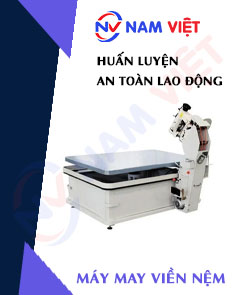

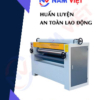






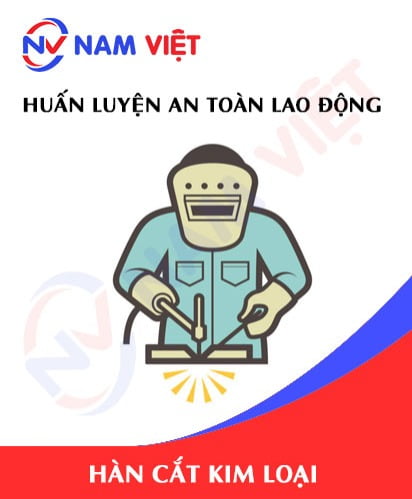
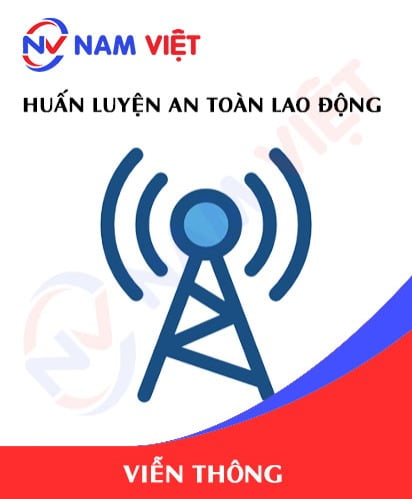
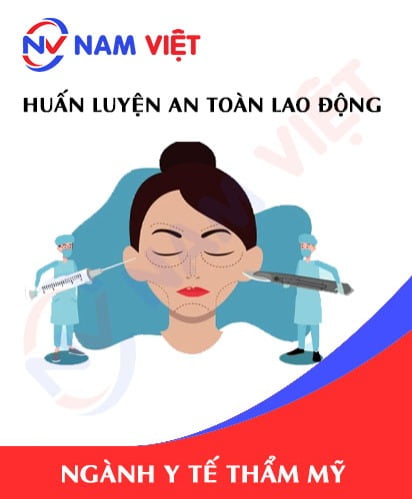


Review Occupational Safety Training for Mattress Edge Sewing Machine Operation
There are no reviews yet.